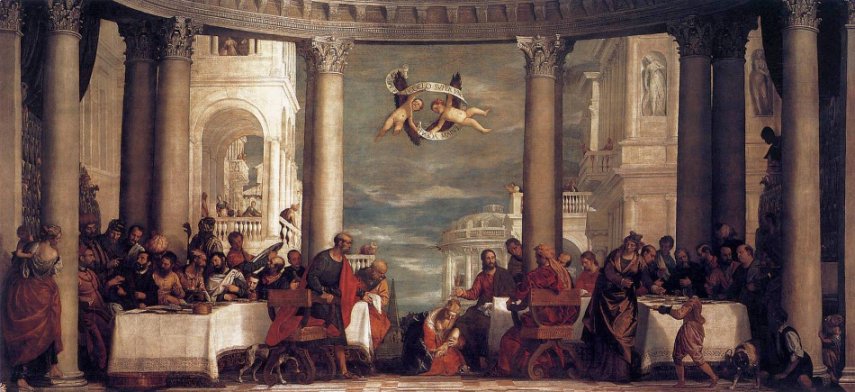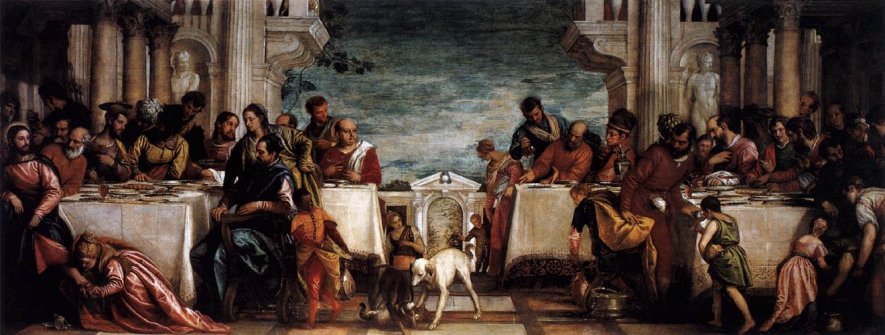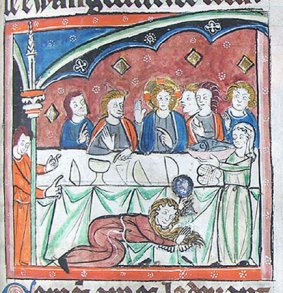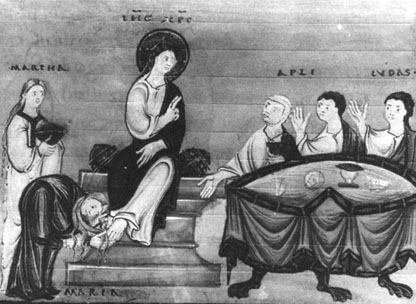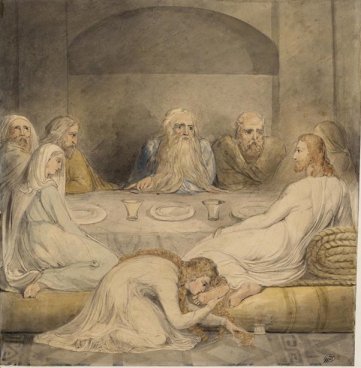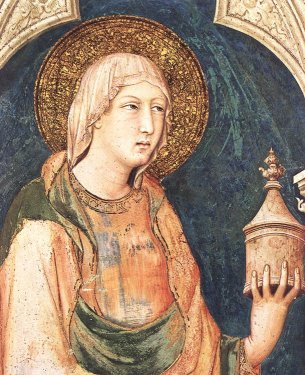|
The Passion of Christ |
|
|
The Anointing of Christ |
|
|
Let's start by comparing the versions of John, Mark and Matthew, very much a part of the Passion narrative, and Luke chapter 7, which is not. John Then Jesus six days before the passover came to Bethany, where Lazarus was which had been dead , whom he raised from the dead. There they made him a supper; and Martha served : but Lazarus was one of them that sat at the table with him. Then took Mary a pound of ointment of spikenard , very costly, and anointed the feet of Jesus, and wiped his feet with her hair: and the house was filled with the odour of the ointment. Then saith one of his disciples, Judas Iscariot, Simon's son, which should betray him, Why was not this ointment sold for three hundred pence, and given to the poor? This he said , not that he cared for the poor; but because he was a thief, and had the bag, and bare what was put therein . Then said Jesus, Let her alone: against the day of my burying hath she kept this. For the poor always ye have with you; but me ye have not always. Matthew Now when Jesus was in Bethany, in the house of Simon the leper, There came unto him a woman having an alabaster box of very precious ointment, and poured it on his head, as he sat at meat. But when his disciples saw it, they had indignation, saying, To what purpose is this waste? For this ointment might have been sold for much, and given to the poor. When Jesus understood it, he said unto them, Why trouble ye the woman? for she hath wrought a good work upon me. For ye have the poor always with you; but me ye have not always. Mark And being in Bethany in the house of Simon the leper, as he sat at meat, there came a woman having an alabaster box of ointment of spikenard very precious; and she brake the box, and poured it on his head. And there were some that had indignation within themselves, and said, Why was this waste of the ointment made? For it might have been sold for more than three hundred pence, and have been given to the poor. And they murmured against her. And Jesus said, Let her alone; why trouble ye her? she hath wrought a good work on me. For ye have the poor with you always, and whensoever ye will ye may do them good: but me ye have not always. She hath done what she could: she is come aforehand to anoint my body to the burying. Luke The same event, or a different one? the locations, and, as far as Luke is concerned, the timing, are not the same, but the narrative detail strongly suggests it is the same story. Which scene? This story has not been that frequently painted, unlike the events at the house of Mary and Martha previously mentioned (Luke 11 38 - 42) When it has it is not that easy to determine which gospel story is intended. Veronese's two versions, both ridiculously over the top as was usual with this artist, are entitled Christ in the House of Simon. This has to be Luke's Simon, as in Matthew and Mark Christ's head is anointed, not his feet. But the Brera version adds a further complication. Christ and Mary have been pushed off to the side, and centre stage is taken by two dogs fighting over a cat. But look at the character to the right of them, getting up ready to head off. The purse gives the game away; Judas heading off to see the high priest, hoping to fill that purse. In this picture Veronese is conflating the accounts in all three synoptic gospels. |
|
|
|
|
|
|
|
|
Something a little more humble, and, to me, rather more appealing. The miniature on the left, below, comes from the Canticles, Hymn and Passion of Christ (Late 13th Century, Saint Augustine's Monastery Canterbury, now at St. John's College Cambridge). Context tells us that this is an illustration to John; it is described as showing the House of Martha and Mary, and is followed by an image of the entry into Jerusalem. The image on the right is even older; it is from Codex Egberti, c. 990 CE, now in the Stadtbibliothek, Trier. No problem with this one - Martha's name is over her head. |
|
|
|
|
|
Now what about William Blake? I'm going for Luke: the grumpy looking character with the beard must be that Pharisee. |
|
|
|
|
|
So who is it? Luke says a sinful woman; in Matthew and Mark it is just a woman; in John it is Mary, the sister of Martha. One problem with the New Testament is that, like those Simons, there are rather too many Marys. The general view seems to be that the sinful woman in Luke is Mary Magdalene, but the Mary in John is not - she is Mary of Bethany. The problem with this is that ointment: if Matthew and Mark have an alabaster box in their stories, shouldn't it be the same person featured in Luke? Too much of a coincidence otherwise. And if Mark and Luke's anointing takes place just before the Passover like John's, logically that has to be the same person too. In The Mask of Christ Picknett and Price suggest, rather mischievously, that academics are loth to make this connection because it features in Dan Brown's books, and sensational stuff like The Holy Blood and Holy Grail, with which they do not want to be associated. Two points here; the first, art. The picture by Blake above is titled 'Mary Magdalene washes the feet of Christ'. Regardless of such theological debates, artists wanted the lady with the alabaster box to be the Magdalene, and that ointment container became her attribute. |
|
|
|
|
|
So is it the Magdalene? Well, possibly, but there is a problem. In John Chapter 20 John describes the appearance of Christ to Mary Magdalene after the resurrection, described here. If this was the Mary that anointed Christ a few days before, why didn't he name her? And yet . . . in John 12 /7 When the apostles grumble about the waste of money, Christ says 'Let her alone: against the day of my burying hath she kept this.' Is this not a reminder of the visit to the tomb of Christ by the Magdalene? |
|
